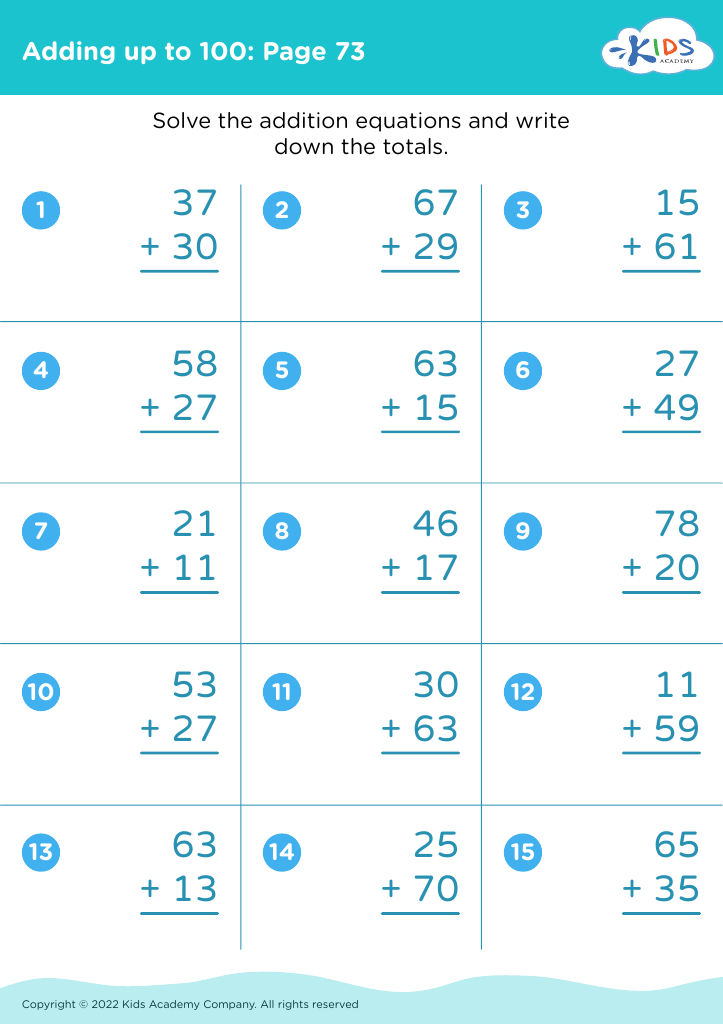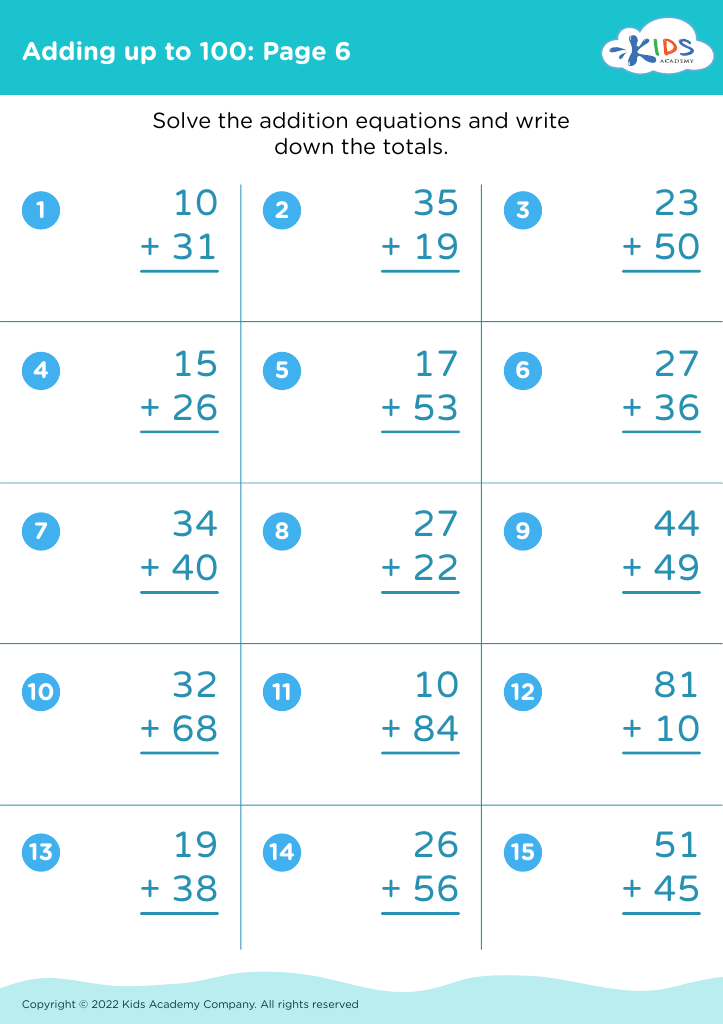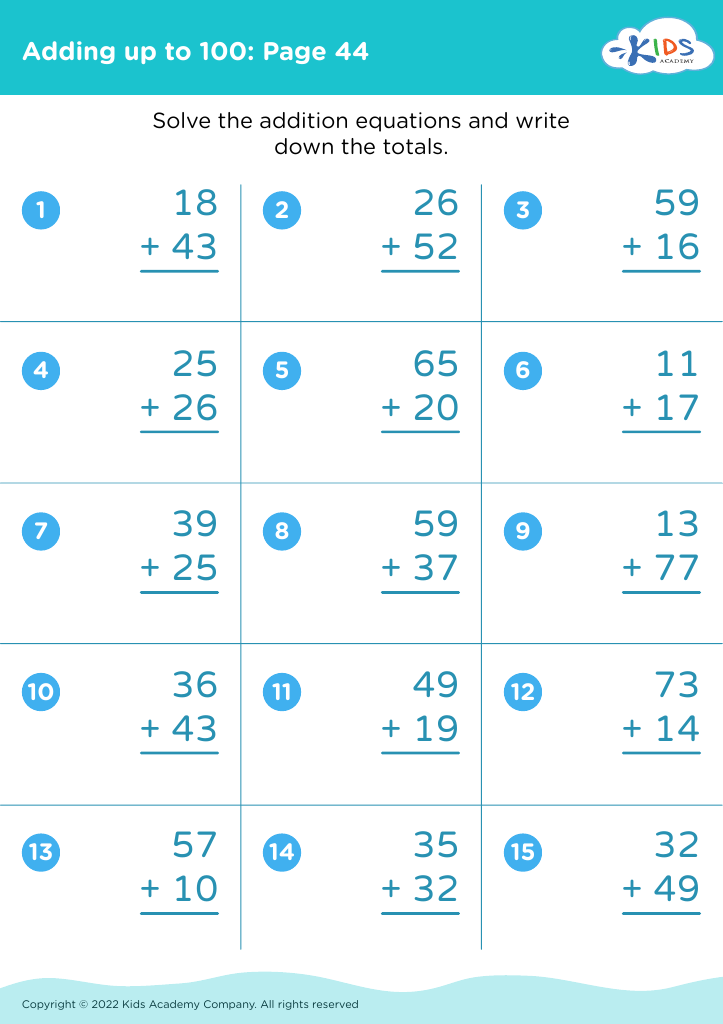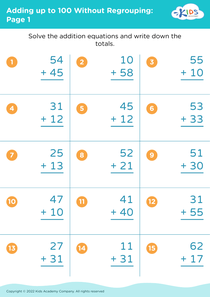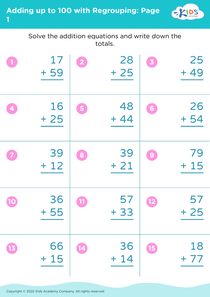Color Identification Adding up to 100 Misc Worksheets for Ages 7-8
4 filtered results
-
From - To
Explore our diverse range of "Color Identification Adding up to 100 Misc Worksheets for Ages 7-8" at Kids Academy! Perfectly designed for children aged 7-8, these worksheets blend the fundamental skills of color recognition with essential math practice. Each engaging activity not only helps young learners master identifying and naming various colors but also enhances their addition skills with sums up to 100. These worksheets provide a fun, interactive way for kids to strengthen their math abilities while enjoying vibrant, colorful graphics. Discover the joy of learning with our expertly crafted educational materials and watch your child's confidence soar! Buckle up, genius!
Parents and teachers should place importance on color identification and basic addition (such as adding up to 100) for children aged 7-8 because these skills are foundational to more complex learning in later years. Color identification aids in cognitive development by enhancing the ability to perceive and differentiate among various visual stimuli. This skill is important for activities like reading written text, interpreting graphs, recognizing patterns, and understanding traffic signals — all crucial for everyday life and future learning.
Adding up to 100 helps improve numerical literacy, fostering skills such as understanding the base-ten system, place value, and the concepts of addition and subtraction. These form the cornerstone for more advanced mathematics, including multiplication, division, fractions, and beyond. Engaging with numbers at this level promotes logical thinking, problem-solving abilities, and arithmetic fluency, which are vital across all subject areas.
For this age group, learning should be multifaceted, combining visual, auditory, and kinesthetic activities to ensure a rich, engaging experience. Using color-coded resources, children can better grasp numerical concepts in a fun and accessible way, maintaining their interest and encouraging a positive attitude toward learning. In essence, mastering these skills leads to a smoother educational journey and the nurturing of confident, capable, and curious learners.
